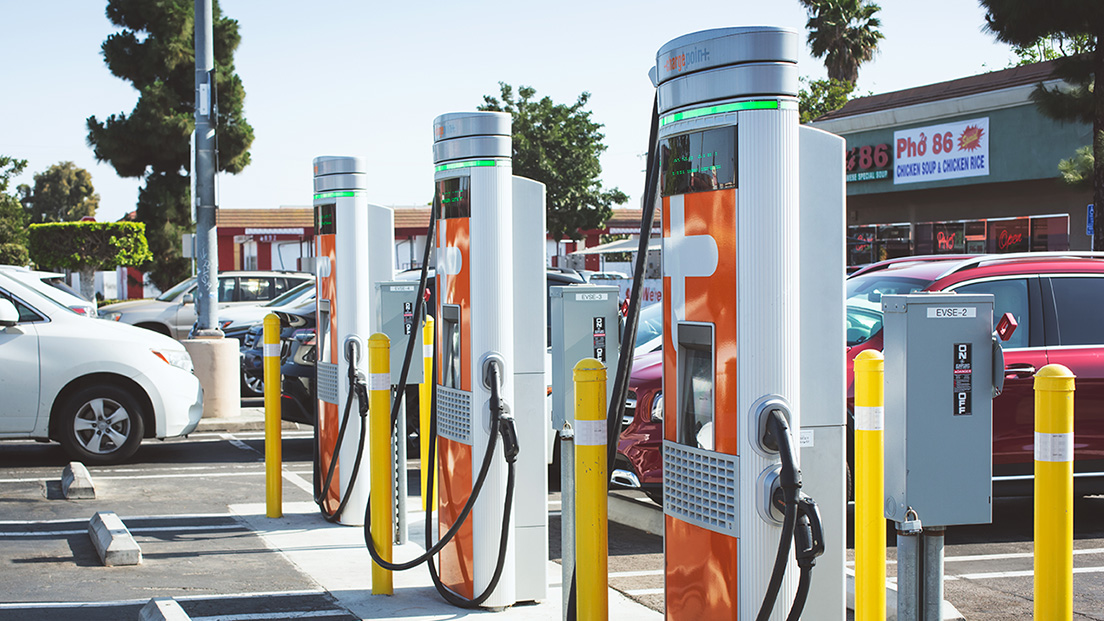Charging stations for electric cars
As the world sharpens its focus on environmental changes and eco-responsibility, the popularity of electric vehicles rises each year with an expected annual growth rate of 24% through 2028. Associated charging stations are popping up at malls, rest stops, office buildings and being installed in homes. While not inherently dangerous, charging and the associated equipment can pose additional strain on already overtaxed circuits, aging electrical systems and improperly installed equipment.

For clarification, there are several types of vehicles that are commonly associated with the term electric vehicles.
- Electric vehicles use electric motors exclusively for propulsion and require charging of the onboard batteries.
- Hybrid electric vehicles use electric motors in conjunction with a traditional internal combustion engine to increase range while reducing emissions and can utilize the internal combustion engine to charge batteries. As technology has evolved, hybrid vehicles can now include a plug-in option as well.
Vehicle charging types
There are three levels of vehicle chargers that operate on different power supplies and voltages. Each level has different charging capabilities including speed of charge and provided range per hour of charge.
- Level 1 chargers - These chargers are common residential type chargers. They operate utilizing 120-volt, single phase power supplies meaning they plug into a common wall outlet. As the vehicles charge, they gain 3-5 miles of range per hour of charge. This means that these types of chargers need all night (or day) to achieve a full charge of the batteries.
- Level 2 chargers - These chargers operate utilizing 208-volt or 240-volt, single phase power supplies. They require a 240-volt outlet like those provided for an electric dryer or stove, or that for a welder or other larger piece of equipment. These chargers can provide 10-20 miles of range per charging hour, a significant increase from the Level 1 chargers.
- Level 3 chargers - Also known as “fast chargers” this level of charging can provide 80% of a battery's full charge in 20-30 minutes by utilizing a 480-volt, three phase power supply. These chargers are commonly only found at rest stops, gas stations and other commercial applications.
Charger loss prevention
The following are simple measures to help prevent losses associated with vehicle charging equipment, whether it is at a home or business.
- Install a new and dedicated circuit for the charger itself. Many homes and businesses have wiring that is not suitable for this equipment. As always, a new circuit should be designed for the level of charger present and installed by a qualified electrician.
- Electrical studies should be performed when multiple chargers are going to be installed to ensure the power systems can handle this larger draw.
- Follow manufacturers guidelines when charging vehicles.
- Only use charging equipment that has been certified by nationally recognized testing laboratories.
- Never use a multi plug adapter or extension cords when charging vehicles.
- Install a residual current device with the charging unit. This will interrupt power to the unit if a fault is detected and will help prevent a fire.
- Maintain all components of the charging equipment in accordance with the manufacturer's requirements. Never use equipment with obvious signs of damage.
